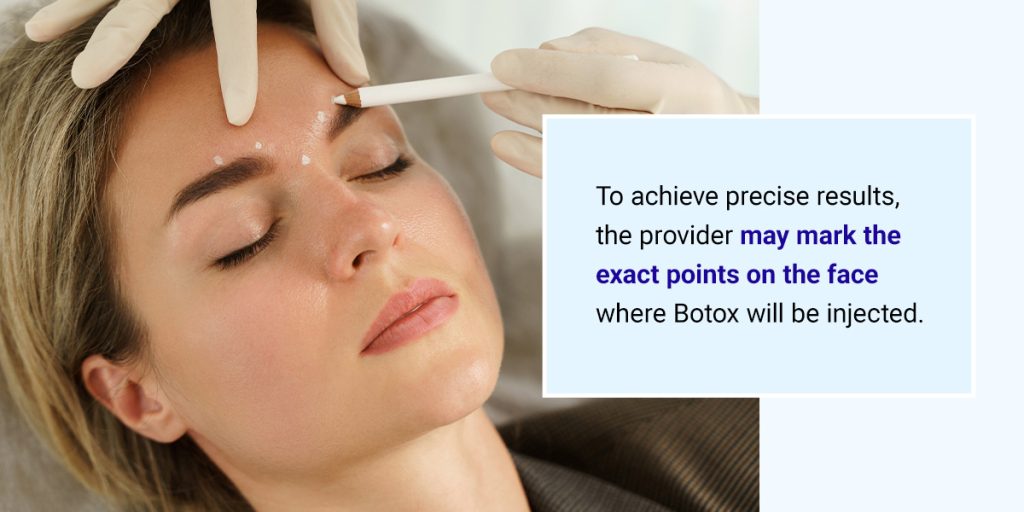Preparing Clients for Their First Botox Treatment

Worldwide, over 8.8 million Botox injections were performed in 2023. Although it’s a popular treatment, not all clients have received it before. For many, it may be their first Botox treatment ever. Clients coming in for their first Botox procedure may feel unsure, anxious or even scared.
As a medical professional, you’ll want to ensure that each client’s Botox appointment — be it their first or a follow-up — goes as smoothly and comfortably as possible. The aim is for your clients to leave with satisfying results and return to you for their follow-ups.
Preparing clients for their first Botox treatment doesn’t have to be complicated. In fact, a little preparation can go a long way in making the experience more comfortable and effective. To help with this, we’ve compiled this guide.
Why Is It Important to Prep Your Clients for Their First Botox Appointment?
There are various reasons why first-time Botox treatment clients require all the necessary information:
- Managing expectations: It all starts with the client and the results they want. Setting realistic expectations about the results — including how long it will take to see changes — can help with their satisfaction.
- Reducing anxiety: Prepping clients can help ease nerves. Giving an explanation of the procedure could minimize their discomfort or their potential fear of needles.
- Educating on the process: Provide information about what happens before, during and after the appointment. Thorough education could help clients feel more informed and confident.
- Discussing possible side effects: Clients should also be informed about potential side effects, such as bruising, swelling or minor discomfort. Transparency prepares clients to handle these temporary effects without undue concern.
- Avoiding medication interactions: Some medications or supplements can increase the risk of bruising. So, it’s essential to advise clients to avoid certain products — like aspirin or fish oil — beforehand.
- Building trust and rapport: Taking time to educate and prepare clients demonstrates your care and professionalism. It builds trust and encourages long-term client relationships.
What Your Client Should Expect During the Procedure
Here’s a breakdown of how medical professionals can explain the Botox appointment to their clients.
1. Consultation and Assessment
The appointment starts with a consultation. The provider chats with the client about their goals and areas of focus.
Whether they want to smooth fine lines around their eyes, soften forehead creases or reduce frown lines, this discussion helps clarify the client’s desired outcome.
The provider will assess specific facial muscles to choose the best injection points. They’ll also review the client’s medical history to confirm that Botox is safe for them.
2. Preparation and Cleansing
Once the consultation is complete, the provider will cleanse the targeted areas to reduce the risk of infection. This keeps everything sterile and safe.
For most clients, numbing cream isn’t necessary since the injections are minimally uncomfortable, but if someone feels nervous about needles, it’s available.
At this stage, the client can ask any last-minute questions, and the provider will be there to reassure them and make sure they feel ready.
3. Marking the Injection Sites

To achieve precise results, the provider may mark the exact points on the face where Botox will be injected. These marks are used as guides.
Marking also ensures that the Botox is applied only where it’s needed while avoiding areas that aren’t part of the treatment goal. One example is targeting specific muscles that contribute to unwanted lines or wrinkles.
4. The Injection Process
When it’s time for the injections, the provider uses a very fine needle to make small, quick injections into the targeted muscles. Each injection takes just a few seconds. While clients may feel a tiny pinch, it’s usually over before they know it.
The provider’s focus is on precision. They’ll ensure each injection hits exactly the right muscle for the desired result. This step is usually fast, and the whole injection phase only lasts a few minutes.
5. Post-Injection Care Instructions
Once the injections are done, the provider will explain simple aftercare instructions. These typically include:
- Avoiding rubbing or massaging the treated areas.
- Staying upright for a few hours.
- Skipping any strenuous activities and exercise.
- Avoiding hot environments, like saunas, for the rest of the day.
Following these tips helps keep the Botox in place. They help prevent it from moving to unintended areas and stay concentrated where it’s needed.
6. Quick Recovery and No Downtime
One of the best things about Botox is how quickly clients can get back to their regular routines. Unlike surgical procedures, Botox requires no downtime, so clients can return to work, go out or do other non-strenuous activities right after.
The convenience makes it easy to fit Botox into a busy schedule without having to pause life.
Follow-Up Treatments
Medical professionals must also know about Botox follow-up treatments to keep their results looking great. Here’s some information they should provide their clients with:
- How long it lasts: Botox typically lasts about three to four months. Some people might notice the effects fading a bit sooner, while others enjoy them long after. Regular follow-ups help maintain that smooth, fresh look.
- When to schedule: It’s a good idea to remind clients to book their next session every three to four months. Many clients find it helpful to schedule their follow-up when they start noticing a return of expression in the treated areas.
- Adjustments: Follow-up Botox appointments are a great time to make tweaks. The provider might adjust the dosage or target different areas based on how their client looks and feels.
- Building lasting results: Over time, Botox can actually last longer. As your clients’ muscles relax more with each treatment, they might find that they need less Botox for the same effect.
- Speed and ease: Follow-up appointments are usually quicker and easier than the first one since the provider knows what works best for the client.
- Aftercare: Clients should still follow best aftercare practices. They must avoid rubbing or massaging the area and skip intense workouts or heat for the rest of the day.
Elevate Your Career and Empower Your Patients Through AAAMS
If you’re ready to take your Botox skills to the next level and provide the best results for your clients, The American Association of Aesthetic Medicine and Surgery (AAAMS) training is the way to go.
Our Botox 101 course covers everything from facial anatomy to injection techniques. We want to ensure you’re also well-prepared for those first Botox treatments. Plus, our courses are hands-on and come with training certification, so you’ll feel confident in your abilities.
You’ll also gain access to an exclusive network of professionals who will support your growth and keep you informed on the latest trends in the field.
Contact us online and start your Botox training today!
Posted on behalf of
640 South San Vicente, Suite 410
Los Angeles, CA 90048
Phone: (310) 274-9955
info@aaams.net
Monday - Friday 9:00 AM – 5:00 PM

